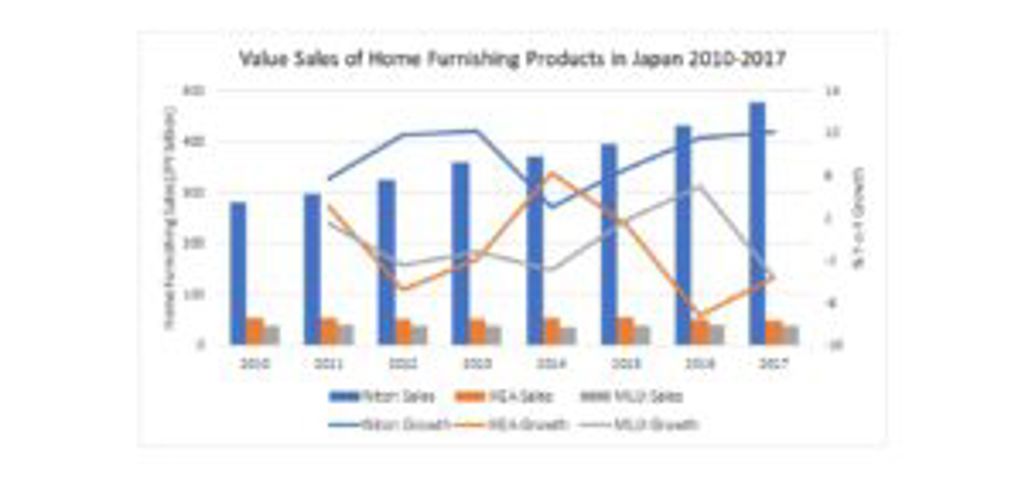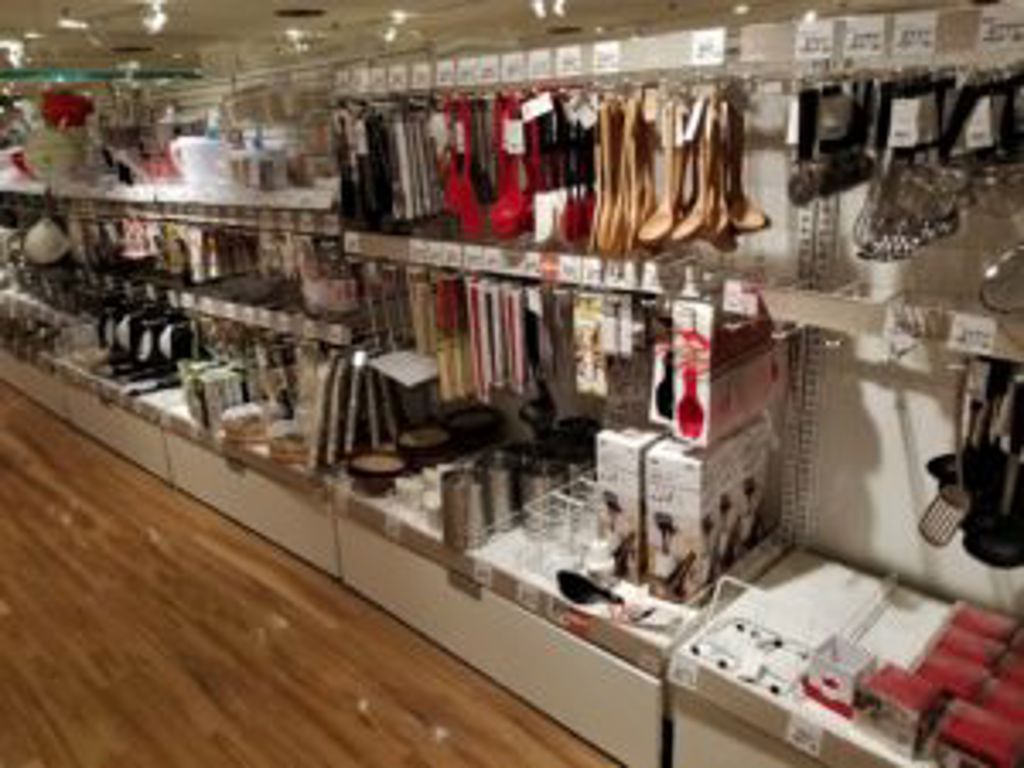When you look for furniture, what store or brand comes to mind? MUJI, Nitori and IKEA are the main brands that many Japanese consumers think of first. We will compare these three brands across three aspects - brand image, consumer experience and store opening strategy - and discuss what is the key to branding for consumer goods.
A point common to MUJI, Nitori and IKEA is that cost-effective furniture can be found relatively easily. However, the price range is not entirely the same, and they have brand images that look alike but are different. For example, in the case of a simple two-seat sofa, the price range is from JPY50,000 to JPY60,000 for MUJI products, from JPY20,000 to JPY30,000 for Nitori, and from JPY10,000 to JPY20,000 for IKEA. As for brand image, while MUJI gives a strong impression of "simple", "natural" and "quiet", Nitori gives the impression of "functional", "practical" and "fits well with a Japanese house". On the other hand, IKEA gives the impression of "pop", "colourful" and "fine design". Let us look more closely at the characteristics of each brand.
As for MUJI products, the branding of MUJI, literally meaning “no brand”, was its origin. The idea was that the products were not branded but of good quality, in other words, the company marketed the good cost performance by not having the "brand". However, over time, the unique world of MUJI itself has become a brand rather than simply good cost performance. People who are attracted by plain design, brand vision and message, organic and ethical image, etc can be said to be the core followers of MUJI products. The design of MUJI furniture has a minimal, rustic image that uses few colours, and is reminiscent of the world of MUJI.
Nitori has grown significantly with the phrase "O, nedan ijo" meaning “Wow, more worthy than the cost!” as its core concept. Nitori takes the form of a manufacturing retailer and focuses on the balance between quality and price at a high level by taking on all roles from manufacturing to distribution to retailing. However, it is also true that while Nitori has succeeded with its low price strategy, there are some consumers who have eschewed Nitori believing that low price means cheap. Against such a background, in recent years Nitori has marketed the total coordination of rooms rather than low prices and has an extensive product line-up of kitchen items and small interior items in order to attract consumers that have previously avoided Nitori. Nitori's furniture is designed small enough to fit a Japanese house, and its high functionality is a major feature. Nitori’s sincere desire to add some new value every year to the same product is also considered to be a factor of its success.
In terms of IKEA, in addition to mass production on a global scale, it can be said that the minimisation of operating costs is linked to the high competitiveness of the brand in terms of price. For example, the offer of self-construction flat-pack furniture, which is designed to increase transportation efficiency and reduce storage costs, is well known. However, in Japan, growth in the number of stores has been slow in recent years, and as a result, the customer base has not expanded significantly. One of the great attractions of IKEA is its exciting and unique store experience, which is achieved by following the route laid out in a store surrounded by a large number of IKEA products. Therefore, it is important to increase the opportunities for more consumers to enjoy this experience. Its Nordic design is also a feature of IKEA. There are products that are colourful, exciting and warm, while there are other products that are chic, stylish and formal. It is unique to IKEA having these various elements appear together.
So far, we have seen differences in the brand image of the three furniture brands that are familiar to Japanese consumers. Although the MUJI, Nitori and IKEA brands are all targeted at the mass segment, their strengths and strategies do not always match. From this point forward, we will compare from the perspective of consumer experience and store opening strategy.
How do you get the consumer to choose your product from among the countless competing products? Understanding diversifying consumer needs is now essential in any kind of business. We classify and analyse the most important consumer trends that will have a major impact on global business by 2030 as "Megatrends".

Of the Megatrends analysis, let us focus on “Experience More” and analyse the approach of the three brands.
"Experience More" refers to consumer trends that emphasise the brand experience gained from products and services. Consumers are looking for more authentic products and services that are more personalised to each individual, and brands are more likely to communicate directly with consumers to meet their needs.
In other words, consumers are not simply looking for products that are superior in terms of quality or price, but products that offer an attractive worldview/purchasing experience, and it is becoming necessary for brands to build and tell an interesting brand image.
For example, IKEA has IKEA restaurants and Swedish food markets present at some stores, providing foodservice and grocery products that are seemingly unrelated to its main business. It can be said that rather than just selling furniture, these outlets offer a place to express IKEA's image of Scandinavia-based healthy and sustainable lifestyles through the most familiar product category for consumers.
As for MUJI, the company opened its very first hotel and restaurant business in Japan, “MUJI HOTEL GINZA” and “MUJI Diner” on 4 April 2019. Experiencing MUJI products in a hotel or restaurant style may not sound like a new idea, but the fact that MUJI will be able to provide a direct experience based on its brand image can be its strongest tool to help consumers recognise the MUJI world.
Both of these brands are taking one step further than selling furniture at a retail store, by providing consumers with a broader brand experience. This is because both IKEA and MUJI understand well that consumers value not only product performance and price but also how much they can agree with the story related to the product, and both IKEA and MUJI appear to understand this very well.
On the other hand, looking at Nitori, although there is content that enhances the brand image on the website, it seems that there is still little effort at the actual store to expand and enhance the brand experience. How does Nitori approach consumers?
One of the answers is the recent opening of urban stores. Since 2015, Nitori has been actively opening stores in urban areas, and as a result, has succeeded at being recognised as a familiar brand by more consumers. Unlike IKEA and MUJI, Nitori does not express the worldview of the brand in a separate business format but takes the approach of increasing touch-points with consumers through its store opening strategy and increasing brand recognition.
In terms of store opening strategies, IKEA has planned to expand into the development of urban stores on a global basis and announced that stores will be opened in five trend-leading cities such as Paris and New York. In Japan, it was announced that an urban store will be opened in Harajuku by the spring of 2020, and competition in the domestic furniture market has shifted to central Tokyo. Until now, the major Japanese furniture retailers have focused their outlet strategy on stores in the suburbs in order to secure the large store area, but that trend has changed when Nitori opened smaller urban outlets in Ikebukuro and Ginza in 2015. While Nitori's sales growth was driven by the success of functional products, the introduction of urban stores also led the growth strongly. Japan's population influx into urban areas is continuing, so this movement is likely to continue.

In urban stores, household furniture such as tableware is mainly sold rather than furniture with low purchase frequency. By increasing the points of contact with consumers and having them deepen their understanding of the brand, a virtuous cycle is expected to develop that will encourage consumers to choose that brand when purchasing furniture in the future.

(Kitchenware at Nitori store; picture taken by an analyst)
Even with MUJI products, the proportion of sales of easy-to-carry products such as clothing and food is high, and it can be said that the store operation is similar to that of Nitori's urban stores. Given the size of the outlet of IKEA's Harajuku store, it is likely to operate a similar strategy. How to express IKEA's worldview in a limited store size, and to guide consumers living in urban areas to large suburban stores and their online store will be a major issue for IKEA.
In order to achieve consumer loyalty, it is necessary to have a brand image that consumers canempathise with, a worldview behind products, and more points of contact with customers. In this context, companies are moving away from existing business areas and looking for more direct contact with customers. This is an issue that cannot be avoided in the future in the consumer goods industry, not only in the furniture industry, in terms of how consumers will choose products in a highly competitive environment in Japan where the size of population and household decreases over the coming years while consumers’ requirement level for qualiy and price is very high.
